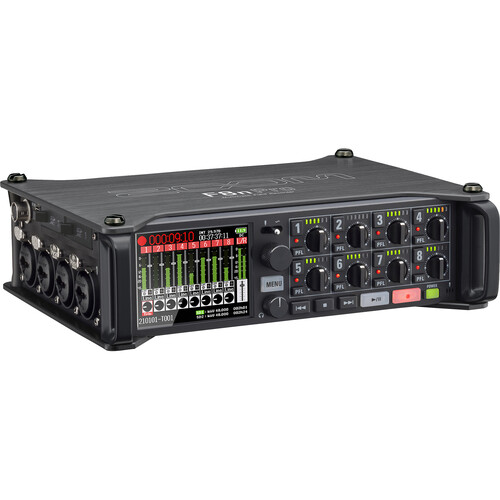- Posted on
- • Mixers
Why the Zoom F8n Was Never Ready for the Big Leagues
- Author
-
-

- User
- Rusty Rogers
- Posts by this author
- Posts by this author
-

Why are there so many of thest on eBay?
The Zoom F8n (released in 2018 as an update to the original F8 from 2015) was a watershed moment in location audio. It was the first time an 8-input, timecode-accurate recorder was available for under $1,000, bringing "pro-sumer" features to the masses. Yet, for all its disruptive potential, the F8n was ultimately a temporary solution—a stepping stone that was outdated almost from the start and never truly met the demands of high-pressure, professional production.
It’s time to be honest: while the F8n is an incredible value for the indie filmmaker or the hobbyist, relying on it for high-end work is a workflow risk that professionals shouldn't take.
The Pro-Level Features Were Compromised The F8n marketed itself on professional features, but many of them had caveats when compared to the industry standard Sound Devices and Zaxcom recorders:
Outputs: The Wrong Connectors. Professional gear lives in a world of balanced XLR connectors. The F8n offers two main outs on TA3 mini-XLR jacks, requiring adapters and introducing unnecessary points of failure. The sub-outs are an unbalanced 1/8” mini-jack, which is firmly a consumer-level choice for feeding cameras or other devices.
The Headphone Amp: A Notorious Weak Point. A major complaint across professional forums (even on the F8n Pro) is the poor quality and lack of clarity in the headphone output. For a professional sound mixer, the headphone amp is the single most critical monitoring tool. If you can't trust what you're hearing, you can't deliver a good mix.
Mixing Controls: A Muddled Workflow. While the optional F-Control offers physical faders, there's persistent confusion about the relationship between the physical Trim knobs and the Faders, with some users finding the faders primarily control the mix to the output tracks, not the recorded ISO track gain in real-time. This departure from standard broadcast console workflow adds friction and potential for error in a fast-paced environment.
The Limiter Isn't Analog This is perhaps the biggest philosophical divide between Zoom and the high-end competition. The F8n uses an Advanced Look-Ahead Hybrid Limiter that operates in the digital domain. While Zoom touts its efficiency and "look-ahead" capability, a digital limiter requires the incoming analog signal to be converted to digital before the limiter is applied.
By contrast, recorders like those from Sound Devices apply analog limiters before the Analog-to-Digital (A/D) conversion. This is the ultimate safeguard against clipping on the loudest, most unexpected peaks, as it truly tames the signal before it's digitized. For the pro mixer who cannot tolerate a clipped track, this distinction is not academic; it is mission-critical. The digital limiter is a compromise based on the F8n's internal architecture, not a superior design choice.
- The Onslaught of "Pro" Successors Confirms the Flaw The most telling sign that the F8n was incomplete is the speed with which Zoom felt compelled to release its successor, the F8n Pro (2022). The Pro model addressed the glaring gap of the F8n's dynamic range and gain management by incorporating 32-bit float recording.
The F8n's original 24-bit/192 kHz recording was already considered professional quality, but 32-bit float fundamentally solves the problem of setting input gain correctly by making clipping practically impossible.
The fact that a "Pro" version was quickly released with this game-changing feature suggests the original F8n (and to a lesser extent, the F8n itself) had a demonstrable deficiency when pushed to its limits by demanding, unpredictable production sound. Once 32-bit float became a feature on competitive recorders, the 24-bit F8n instantly became a legacy product in a competitive field.
The Zoom F8n was revolutionary for its price point, but its compromises in monitoring, outputs, and gain-staging safety meant it was a stepping stone—a necessary tool for the budget-conscious, but ultimately never truly ready to be the workhorse on a major professional set.
The video below shows a hands-on comparison between the original F8 and the Sound Devices 688, highlighting the feature gap that was present even at the beginning of the F-series line: Zoom F8 vs Sound Devices 688: Hands-On Sound Comparison.